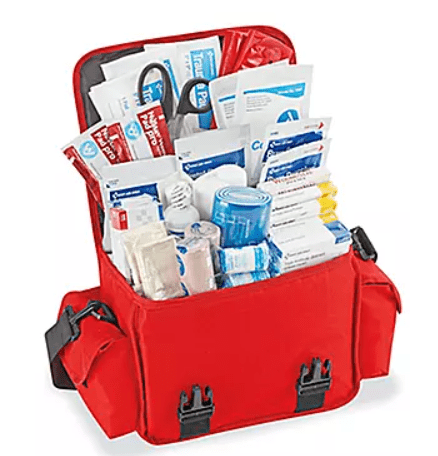Traveling with your family is an exciting adventure, but being prepared for minor mishaps is essential. Building a well-stocked first aid kit ensures you’re ready for anything, so you can focus on creating unforgettable memories together.

CPR and Basic Emergency First Aid Training
Knowing CPR and basic first aid can be a lifesaver—literally! Many facilities offer comprehensive training that equips you with essential skills for handling emergencies. Some even provide free CPR training for children when they attend with an adult, making it a family-friendly way to prepare for the unexpected. By investing a little time in these life-saving classes, you can travel with the confidence that you’re ready to protect your loved ones.
Family and Personal Items
When you’re traveling with kids, a standard first aid kit might not cover all the bases. Here are a few extra essentials to keep your little ones safe and comfortable on your adventures.
Children’s Medications
Kids are not just small adults—they need medications tailored specifically for them. Make sure to pack age-appropriate pain relievers, such as liquid acetaminophen or ibuprofen. These can be lifesavers for unexpected fevers, headaches, or teething pain.
Thermometer
Kids seem to run fevers at the most inconvenient times, don’t they? A digital thermometer is a must-have. It’s quick and accurate, and it helps you keep an eye on potential fevers, allowing you to act swiftly if something seems off.
Hydrocortisone Cream
Nature is full of wonders… and annoyances like insect bites and rashes. Hydrocortisone cream can help soothe itching and inflammation from bug bites, minor rashes, or allergic reactions. It’s a small tube that can make a big difference in keeping everyone comfortable.
Child-Sized Bandages
Let’s face it—kids get scrapes and cuts. Often. Child-sized bandages with fun designs can turn a minor mishap into a quick fix and maybe even a moment of comfort. Plus, they’re more likely to keep a bandage on if it features their favorite cartoon character!
Antihistamines
Traveling can expose your family to new allergens, whether it’s pollen from a different region or a pet at your rental home. Liquid antihistamines can relieve allergy symptoms quickly and are easy for kids to take.
Motion Sickness Remedies
For motion sickness, pack over-the-counter medications like Dramamine or Bonine, which can prevent and relieve symptoms. If you prefer natural remedies, ginger candies or tablets and acupressure wristbands are excellent alternatives to settle an uneasy stomach and don’t have unwanted side effects like drowsiness.
Prescription Medications
Ensure all family members have an adequate supply of their prescription medications. Include spare glasses or contact lenses, along with saline solution and a lens case if needed.
Emergency Items
Emergencies are unpredictable, but being prepared can make all the difference. Include a CPR face shield in your kit for safe resuscitation in case of a serious incident.
Don’t forget an emergency contact card with crucial information like family medical details, Doctor’s contact info, and known allergies.
Lastly, pack small scissors and tweezers—essential for cutting bandages or removing splinters, ensuring you’re ready for any unexpected situation.
Packing and Storage Tips
Keeping your first aid kit organized and accessible is key to handling any situation quickly. Opt for a compact, waterproof container to protect your supplies from moisture and spills. Store the kit in a central spot in your travel bag so you can grab it at a moment’s notice.
Regularly check and update your kit to replace any expired items, ensuring everything is always in tip-top shape for your family’s adventures.
Conclusion
A well-prepared first aid kit is your travel safety net, ensuring peace of mind and swift action in emergencies. By including these essentials, you’re ready for anything, allowing you to enjoy your family adventures to the fullest. Safe travels!



